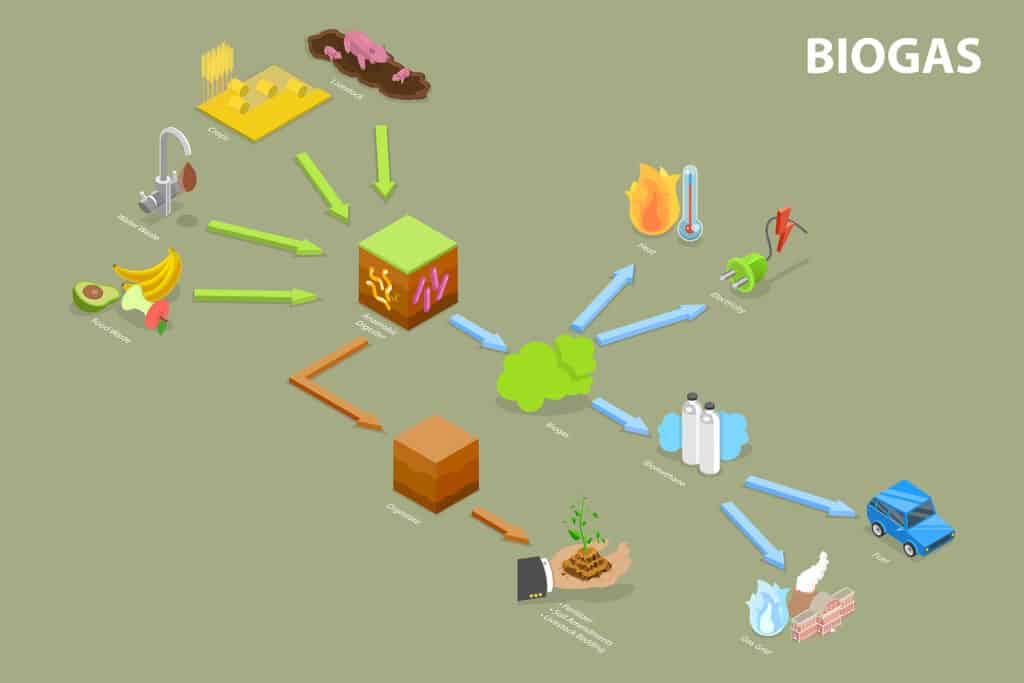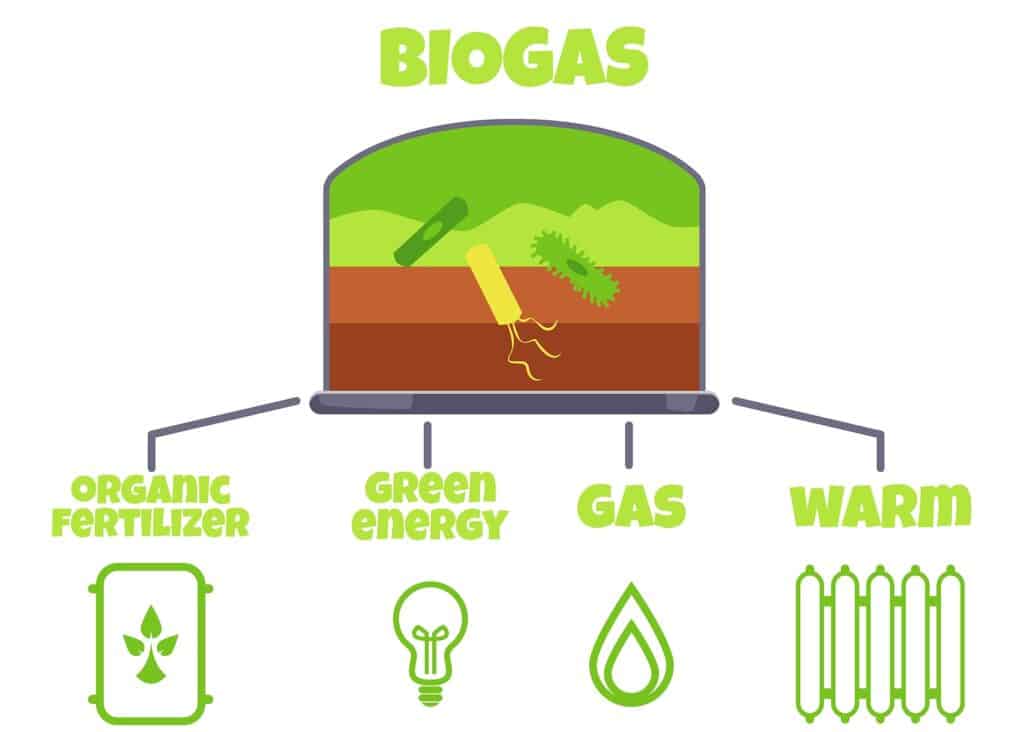In our quest for sustainability and waste management excellence, our company is embracing the evolving landscape of renewable energy. We are excited to embark on a transformative journey ‘From Farm to Factory: How Biomass Energy Systems are Changing the Game'. This comprehensive guide will provide valuable insights into how we can leverage biomass energy systems to convert organic waste into a reliable source of energy.
As a company dedicated to promoting waste management and sustainability practices, we recognize the immense potential of biomass energy systems. By harnessing the power of organic waste, we can not only reduce our environmental footprint but also contribute to a greener future. Through this guide, we will explore the innovative ways in which our company can utilize biomass energy systems to transform waste into a valuable resource.
Introduction to Biomass Energy
Biomass energy is one of the oldest forms of energy production in human history, with roots in burning wood for heat. However, modern biomass systems convert organic materials—like plant and animal waste—into electricity, often through combustion, biochemical conversion, or thermochemical conversion.
Biomass resources comprise multiple categories, including agricultural residues, dedicated energy crops, forestry residues, algal biomass, and waste biomass. Biomass energy is a form of renewable energy because it utilizes materials that can be regrown or replenished, making it a sustainable choice for future energy production.
The Evolution of Biomass Energy
Biomass energy systems have seen substantial development over the years. From open fires in primitive societies to modern biomass boilers and biofuel production plants, this evolution reflects our growing understanding of renewable energy and sustainability.
With advancements in technology, biomass energy systems inc have become more efficient and less damaging to the environment. The shift from basic combustion to more advanced gasification and anaerobic digestion processes allows for cleaner and more efficient energy production.

The Biomass Energy Systems Production Process
The production of biomass energy is a highly detailed and intricate process that transforms organic waste material into a usable form of energy. This journey is categorized into several key stages:
Identification of Suitable Biomass Sources
The initial stage involves identifying suitable sources of biomass. Biomass can originate from a wide array of organic materials such as agricultural waste (crop residues, manure), forestry waste (fallen trees, branches), and even waste from management facilities (landfills, sewage plants).
Collection of Biomass
Once the appropriate sources are identified, the process of collection begins. This process varies depending on the type of waste. For example, agricultural waste such as crop residues and manure are harvested from farms, while forestry waste like fallen trees and branches are collected from forests.
Transportation of Biomass
The collected biomass is then transported to a processing facility. Given the sheer volume and variety of materials, this stage often requires meticulous planning and logistical efficiency to ensure minimal energy wastage.
Processing of Biomass
On arrival at the processing facility, the biomass materials undergo a preparation stage. This often involves chopping, shredding, or milling the biomass to a size that facilitates the subsequent conversion process.
Conversion of Biomass into Energy
This is the heart of the biomass energy production process. Biomass can be converted into energy through a variety of methods such as direct combustion, co-firing, pyrolysis, gasification, or anaerobic digestion. Each method has different efficiencies and environmental impacts. It is vital to choose the most suitable method depending on the type and condition of the biomass source.
Energy Storage
After the conversion process, the resultant energy needs to be stored appropriately to prevent losses. For instance, energy in the form of electricity may be stored in batteries, while thermal energy could be stored using insulated materials.
Distribution of Energy
Once the energy is securely stored, it's then distributed for use. Electricity generated from biomass can be integrated into the grid to power homes and businesses. On the other hand, thermal energy can be used directly for heating applications in industrial or residential settings.
Monitoring and Maintenance
This involves the regular monitoring of the biomass energy systems to ensure it operates optimally. Regular maintenance helps prolong the lifespan of the system and enhance the overall efficiency of the energy production process.
Waste Disposal and Management
The final stage entails dealing with any waste products from the biomass energy production process. These can be further processed to reduce environmental impacts or sometimes, converted into other usable products, thereby promoting a circular economy.
This step-by-step breakdown of the biomass energy production process underscores the importance of each stage, offering a comprehensive understanding of how we transform waste into a valuable source of renewable energy.
Analysis of Biomass Energy's Economic Impact
Biomass energy's contributions go beyond environmental preservation—it also drives significant economic benefits. Here's an in-depth look at how biomass energy impacts our economy:
Job Creation in the Renewable Energy Sector
Biomass energy production is a labor-intensive process that generates a multitude of jobs. These range from farming and harvesting biomass resources to transportation, processing, and management of these resources.
Economic Development in Rural Areas
Biomass energy production can be a major boost for the economies of rural areas. Rural communities often have an abundance of biomass resources, such as agricultural and forestry waste. Harnessing these resources for energy production not only provides jobs but also stimulates local economies.
Creation of New Industries
The rise of biomass energy has led to the emergence of new industries. For instance, the collection and processing of biomass waste have given birth to new business opportunities in waste management and logistics.
Support to Existing Sectors
Biomass energy production supports existing sectors such as agriculture and forestry by providing an additional revenue stream for their waste products. This can lead to increased profitability and sustainability in these sectors.
Energy Independence and Resilience
By utilizing domestic biomass resources for energy production, countries can reduce their reliance on imported fossil fuels. This boosts national energy security and resilience, protecting economies from volatile fossil fuel prices.
Investment Opportunities
The biomass energy industry offers a vast array of investment opportunities. These range from the construction of biomass power plants to the development of new biomass conversion technologies. Such investments can generate returns and stimulate economic growth.
Research and Development Initiatives
The biomass sector has spurred increased research and development activities. These efforts are not only creating high-skilled jobs but also paving the way for innovations that can improve the efficiency and sustainability of biomass energy production.

Examination of Biomass Energy's Environmental Impact
Biomass energy, like all energy sources, carries with it various environmental implications. Below is a detailed examination of its environmental impacts:
Reduction in Greenhouse Gas Emissions
One of the major advantages of biomass energy is its potential to reduce greenhouse gas emissions. Unlike fossil fuels, which release carbon that has been locked away for millions of years, biomass releases carbon that is part of the current carbon cycle. This means that the carbon released during the combustion of biomass was recently absorbed from the atmosphere by the plant itself, making biomass a carbon-neutral energy source.
Combatting Climate Change
By reducing our reliance on carbon-intensive fossil fuels, biomass energy can help mitigate climate change. The use of biomass energy can reduce the concentration of carbon dioxide in the atmosphere, one of the primary greenhouse gases contributing to global warming.
Sustainable Energy Production
When managed responsibly, biomass resources can provide a renewable and sustainable source of energy. Biomass can be continuously grown and harvested without depleting the Earth's resources, provided the growth rate exceeds or matches the harvest rate.
Potential for Deforestation
While biomass energy has several benefits, it's crucial to consider the potential negative impacts of biomass production. One such concern is deforestation, particularly when large areas of forests are cleared to cultivate biomass crops. This can lead to habitat loss and threatens biodiversity.
Impact on Land Use
Biomass production can lead to significant land-use changes, with agricultural land or natural habitats being converted to biomass plantations. This can disrupt local ecosystems and lead to biodiversity decline.
Need for Sustainable Management
Given the potential environmental challenges associated with biomass energy, sustainable management of biomass resources becomes crucial. This involves adopting responsible cultivation practices, minimizing the use of water and synthetic fertilizers, and ensuring that the growth of biomass does not compromise food security or cause land degradation.
Challenges in the Biomass Energy Systems
While the biomass energy sector holds significant potential for renewable energy, it is also laden with certain challenges that can hamper its growth. Here's a comprehensive breakdown of these challenges:
Collection of Biomass
Biomass resources are often scattered across large geographical areas. The process of collecting these resources can be a logistical challenge, especially given the wide variety of biomass types – from agricultural waste to forestry residue.
Storage of Biomass
The storage of biomass resources poses another challenge. Biomass materials can be bulky, and they also have the tendency to degrade over time. This requires efficient and often expensive storage solutions to ensure the integrity of the biomass before it's processed.
Transportation of Biomass
Biomass transportation can be a costly and energy-intensive process. Given the low energy density of biomass compared to fossil fuels, moving large quantities of biomass to processing plants requires significant energy and financial resources.
Complexity of Conversion Processes
The conversion of biomass into usable energy is a complex process that can involve a variety of technologies. The efficiency and environmental impact of these technologies can vary greatly depending on the type of biomass feedstock and the specific conversion method employed.
Life Cycle Emissions
Although biomass energy is often considered carbon-neutral at the point of combustion, the overall life cycle emissions can be substantial. These emissions can arise from various stages of the biomass energy process, including cultivation, collection, transportation, processing, and conversion. The total life cycle emissions depend heavily on the type of feedstock, the conversion process, and the management practices employed.
Sustainability Concerns
The sustainability of biomass energy can vary significantly depending on the specific circumstances. Factors such as the type of biomass, the cultivation and harvesting practices, and the impact on local ecosystems can all influence the overall sustainability of biomass energy. Thus, each biomass energy project needs to be assessed on a case-by-case basis to ensure its environmental, economic, and social sustainability.
Unlocking the Full Potential of Biomass Energy Systems
Despite these challenges, the future of biomass energy seems bright. With advancements in technologies, such as second-generation biofuels, and bioproducts, we are set to overcome many of these barriers and unlock the full potential of biomass energy.
Second-generation biofuels, also known as advanced biofuels, are made from non-food crops or agricultural residues, which can be grown on land not suitable for other crops. This mitigates the risk of food versus fuel debates and makes biomass production more sustainable.
Simultaneously, the development of bioproducts, such as bioplastics, offers additional economic opportunities for the biomass sector. By integrating the production of energy and bioproducts, biomass industries can diversify their portfolio, improve their profitability, and further promote sustainability.

The Role of Policy in Promoting Biomass Energy Systems
Despite the present challenges, the future outlook for biomass energy is encouraging. Advancements in technology, the development of innovative bio-products, and sustainable practices are setting the stage for overcoming existing barriers. Here's a more detailed look at how we can unlock the full potential of biomass energy:
Emergence of Second-Generation Biofuels
Second-generation biofuels, also known as advanced biofuels, offer a significant breakthrough for the biomass energy sector. These biofuels are derived from non-food crops or agricultural residues, enabling biomass production on land otherwise deemed unsuitable for conventional crops. This not only alleviates the “food versus fuel” contention but also contributes to a more sustainable biomass production paradigm.
Land Utilization
The use of second-generation biofuels opens up opportunities to utilize marginal lands that are not suitable for food crop production. By doing so, we can avoid competition with food production and prevent unnecessary land-use change, further bolstering the sustainability of biomass energy production.
Development of Bio-Products
The future of biomass energy is not limited to just energy production. The development of bio-products, such as bioplastics and biochemicals, has opened up new avenues in the biomass sector. These bio-products, derived from biomass feedstocks, present additional economic opportunities that can enhance the profitability of biomass industries.
Integration of Energy and Bio-Product Production
By integrating energy production with the creation of bio-products, biomass industries can diversify their revenue streams. This integrated approach, often referred to as a “biorefinery” model, can enhance the economic viability of biomass energy projects while also promoting sustainability.
Policy Support and Incentives
With adequate policy support and incentives, the biomass sector can attract the necessary investment for technological advancements and infrastructure development. This can help overcome the current logistical and economic challenges and accelerate the growth of the biomass energy sector.
Continued Research and Development
Continued investment in research and development is critical to further improve the efficiency of biomass energy conversion processes and reduce the environmental impact of biomass production. Ongoing innovation can help address the current challenges and push the boundaries of what's possible with biomass energy.
Biomass Energy Systems in a Global Context
Biomass energy presents a compelling proposition from a global perspective, particularly for developing nations. Here's a comprehensive analysis of the role and implications of biomass energy on a global scale:
Answer to Energy Poverty
In many developing regions of the world, access to reliable energy sources is a significant challenge. Biomass energy, derived from abundant agricultural residues and other organic waste materials, can provide a sustainable and economically viable solution to this issue.
Use of Local Resources
The use of locally available resources, such as crop residues, forestry waste, and animal manure, can not only provide a consistent supply of biomass but also help manage waste more effectively, leading to a cleaner and healthier environment.
Stimulating Local Economies
The biomass energy sector can boost local economies by creating jobs across multiple sectors. From farming and forestry to the processing and management of biomass resources, the industry provides ample opportunities for employment.
Promoting Rural Development
Given that many biomass resources are sourced from rural areas, the growth of the biomass energy sector can spur rural development. By generating income and employment opportunities, biomass energy can enhance living standards and contribute to socio-economic growth in rural regions.
Mitigating Climate Change
From a global perspective, the switch to biomass energy can significantly help reduce greenhouse gas emissions, mitigating climate change. Given the urgent need to transition away from fossil fuels, biomass energy presents a viable and sustainable option.
Potential for Technology Transfer
The growth of the biomass energy sector can facilitate technology transfer between countries. Developing countries can learn from the experiences and technological advancements of developed nations to optimize their own biomass energy production.
Enhancing Energy Security
By diversifying their energy sources and reducing dependence on imported fossil fuels, countries can enhance their energy security. Biomass energy, with its domestic and renewable nature, plays a crucial role in this regard.
The Future of Biomass Energy Systems
The future of biomass energy systems is filled with exciting possibilities and advancements. Biomass energy, which harnesses the power of organic materials such as agricultural residues, forestry waste, and dedicated energy crops, holds immense potential for transforming waste into a valuable source of renewable energy. This unique characteristic makes it an incredibly appealing option within the larger portfolio of renewable energy sources.
As we move forward, ongoing advancements in technology are poised to revolutionize biomass energy systems, making them even more efficient and environmentally friendly. Researchers and engineers are actively working to develop innovative processes and techniques that will enhance the conversion of biomass into usable energy, reduce emissions, and optimize the overall efficiency of the systems.
Furthermore, there is growing recognition among policymakers and governments worldwide regarding the urgent need to address climate change and transition to sustainable energy sources. In this context, biomass energy is expected to receive increased support and investment, leading to significant advancements in the industry. Governments are likely to implement favorable policies, provide financial incentives, and foster research and development initiatives to propel the growth of biomass energy systems.
This anticipated surge in support and investment will not only drive the development of new and improved biomass energy technologies but also encourage the establishment of robust supply chains for sourcing biomass feedstocks. These supply chains will focus on sustainable practices, ensuring the responsible sourcing and management of biomass materials, and minimizing any potential negative environmental impacts.
Final Thoughts
As I reflect on the transformative journey ‘From Farm to Factory: How Biomass Energy Systems are Changing the Game,' I am filled with a sense of excitement and hope. The potential of biomass energy to revolutionize the way we generate power and promote sustainable practices is truly remarkable.
As a company dedicated to waste management and sustainability, embracing biomass energy systems resonates deeply with our mission. The comprehensive guide has shed light on the intricacies of the biomass energy production process, the economic and environmental impacts it entails, as well as the challenges and opportunities it presents. It has provided us with a wealth of knowledge to make informed decisions and navigate the evolving landscape of renewable energy.


1 Comment
Dear Kimberly,
Thank you for this insightful piece on Biomass. I am certainly much more the wiser since reading your column.
I am embarking on a project in South Africa with regards to a Biogas plant and with information in hand, I can have the right conversations.
Highly appreciated.
Regards
Dhereen Beedasie